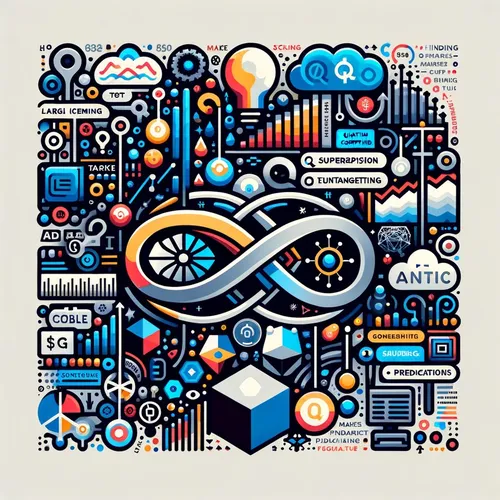D-Wave's Quantum AI Toolkit: Bridging Quantum Annealing and Machine Learning
- Author
- Quiet. Please
- Published
- Mon 04 Aug 2025
- Episode Link
- https://www.spreaker.com/episode/d-wave-s-quantum-ai-toolkit-bridging-quantum-annealing-and-machine-learning--67246066
This is your Quantum Market Watch podcast.
This weekend felt like a phase transition in the field—a sudden, energetic shift. I’m Leo, your host for Quantum Market Watch, and I have to start today’s episode with the news that’s reverberating across both quantum labs and boardrooms: D-Wave Quantum, the company long known for pioneering quantum annealing, just announced a new open-source quantum AI toolkit. That’s right—hot off the press this morning, D-Wave has unveiled tools to let developers natively integrate quantum systems into modern machine learning workflows, right through PyTorch. In a live demo, D-Wave’s team used quantum resources to train a restricted Boltzmann machine and generate simple images, a practical showcase of truly hybrid quantum AI in action.
Let’s pause and break down why this matters, especially for the artificial intelligence sector. For years, AI and quantum computing have existed as twin pillars of emerging tech—each promising, but largely walking separate paths. With today’s announcement, D-Wave just built a bridge between those domains. Imagine using quantum mechanics to help AI models learn complex, subtle patterns—essential for everything from fraud detection to protein folding or even new materials discovery. By enabling PyTorch developers to call a quantum backend as easily as a GPU, D-Wave opens the door to “quantum-first” AI innovation that, until now, was possible only in theory.
For those less familiar, the magic behind D-Wave’s system is quantum annealing. Picture a snowy mountain landscape at dusk. Most machine learning models, when finding solutions, are like hikers fumbling in the dark—able to see only the next step. But a quantum annealer lets us harness superposition to try many routes at once, searching for the smoothest descent. It’s a kind of guided randomness, fuelled by the quantum rules that govern the subatomic world. Today’s toolkit translates this capability directly into industry-standard machine learning pipelines.
What’s the potential impact? In the months ahead, we’ll see manufacturers, logistics firms, and financial analysts ripe to experiment with hybrid AI apps that grow smarter—and faster—by using quantum hardware. The images D-Wave generated today are just a taste: think of this as the first quantum brushstroke on a vast new AI canvas.
Moments like this remind me why quantum computing feels so captivating: every breakthrough reframes what's possible, not just in cold scientific terms but in the texture of our daily technology. As Professor Hidetoshi Nishimori once said—the quantum world doesn’t just change the rules; it changes who gets to play the game.
Thank you for joining me on Quantum Market Watch. If you have burning questions or want a specific topic discussed on air, send me a note at [email protected]. Don’t forget to subscribe, share, and rate us so colleagues can join the quantum conversation. This has been a Quiet Please Production. For more, visit quietplease.ai. Until next time, remember—every day in quantum is the start of something exponentially new.
For more http://www.quietplease.ai
Get the best deals https://amzn.to/3ODvOta
